Intel's Lunar Lake is here to remind you x86 still has a place in laptops: 'You've never seen x86 power characteristics quite like this'
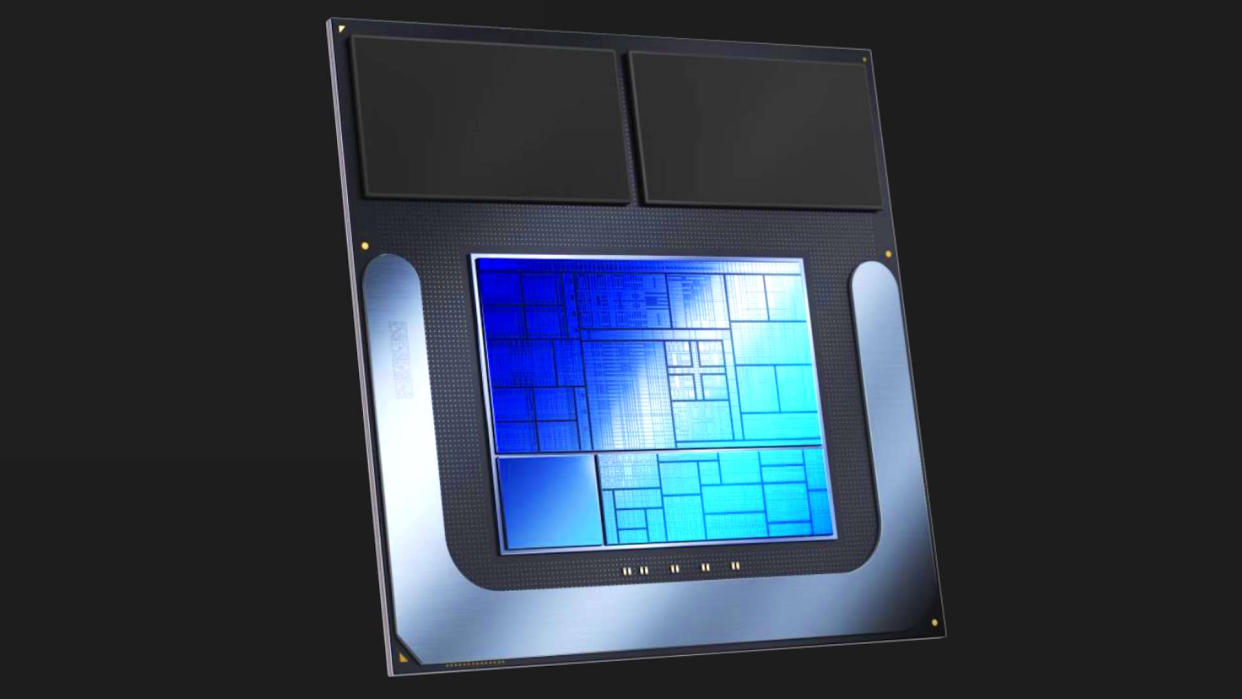
Intel has dropped some fresh details about its new Lunar Lake mobile CPU architecture, including some performance and power claims, but has stopped short of actually backing that up with any data. Claiming it's not ready to show CPU performance at the moment, all we've got are some promises and the unexpected appearance of Microsoft Teams as a CPU benchmarking platform.
Lunar Lake represents the next generation of Intel processors for thin and light laptops and is its first modern CPU design to be made entirely outside of its own manufacturing facilities. Instead Lunar Lake chips are going to be made entirely at TSMC using the N3B node.
That's no bad thing for the end user. After all, do we really care where the silicon is slapped together if it delivers?
And Intel is promising that it will, with the new chips also being the first to use the new Battlemage graphics cores. This integrated Xe2 GPU will reportedly deliver 50% higher performance than a competing Meteor Lake Core Ultra 7 165U in terms of 3DMark Time Spy numbers.
It's worth noting that 3DMark benchmarks have historically been very kind to Intel's Arc GPUs, so it's worth noting that actual gaming performance could well be very patchy still. And the Core Ultra 7 165U only had four Xe cores inside it, too, so it wasn't exactly the hero chip in terms of Meteor Lake's graphics performance.
But that GPU is also what's helping the Lunar Lake chip deliver AI performance that's around 40% faster than the new Snapdragon X Elite chips from Qualcomm when it comes to Stable Diffusion.
AI is the battleground for all processor architectures to fight it out on over the next 12 months at least, so that's obviously a point that Intel wants to hammer home. The Xe2 cores have Battlemage's XMX matrix engines built into the iGPU, which delivers 60 TOPs on its own. Then you've got Lunar Lake's own NPU, which is promised to give up 45 TOPS, which means, as a whole, you'll get over 100 TOPs of AI processing grunt out of the box.
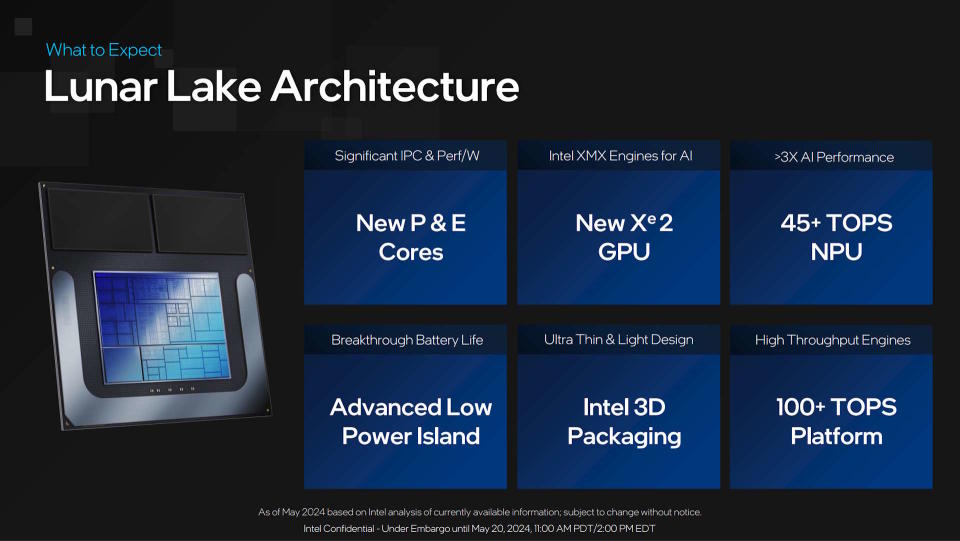


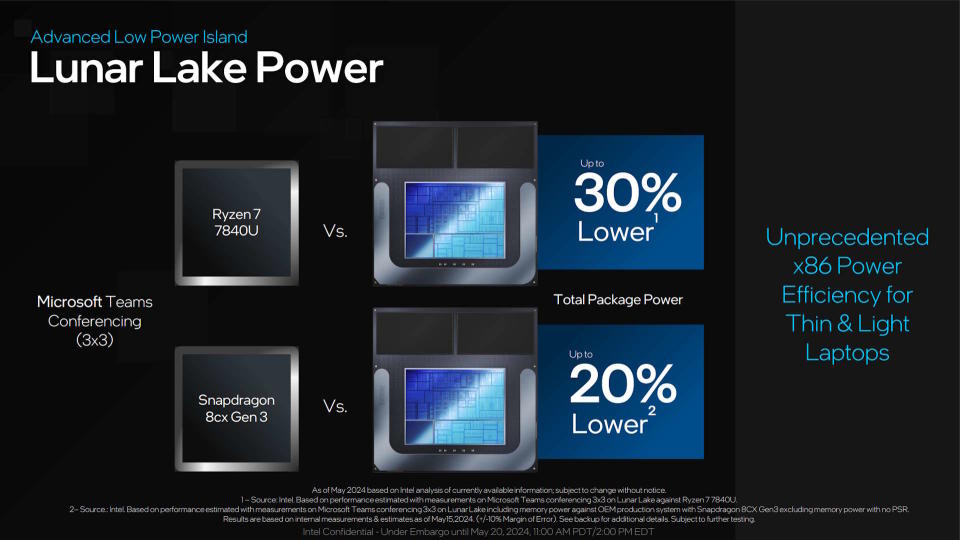
The other battleground for any low-power laptop platform is obviously efficiency. Intel is promising that its Low Power Island will deliver twice the compute as Meteor Lake, and that should give it some real power advantages on simple applications, such as Microsoft Teams. That well-known benchmarking standard.
The Low Power Island was first introduced with Meteor Lake, where Intel dropped a couple of its Efficient cores onto the SoC away from the actual compute tile. That allowed the whole compute tile to effectively go to sleep when the device only needed a pair of E-cores to keep the lights on. With Lunar Lake the intimation is they'll do more than just keep the lights on and will actually be more worthwhile in compute terms.
Intel hasn't said whether that means it's using more E-cores in the SoC Low Power Island, or whether the new Skymont microarchitecture is what delivers this extra compute performance with the same number of new E-cores.
Still, using that Teams chat benchmark, Intel claims up to 30% lower total package power compared with the Ryzen 7 7840U and up to 20% lower than the Snapdragon 8cx Gen 3. That's notably not the new Snapdragon X Elite or X Plus chips, as Intel is only making claims against publicly released benchmark data on Qualcomm's chips. And weirdly Qualcomm hasn't said how much power they drain in Microsoft's conferencing app, though it has said its lower spec X Plus chips will seemingly deliver twice the battery life against Meteor Lake in terms of Teams.
Still, for its part, Intel's Bobby Hallock, once of AMD, has been his usual ebullient self, proclaiming that "you've never seen x86 power characteristics quite like this."
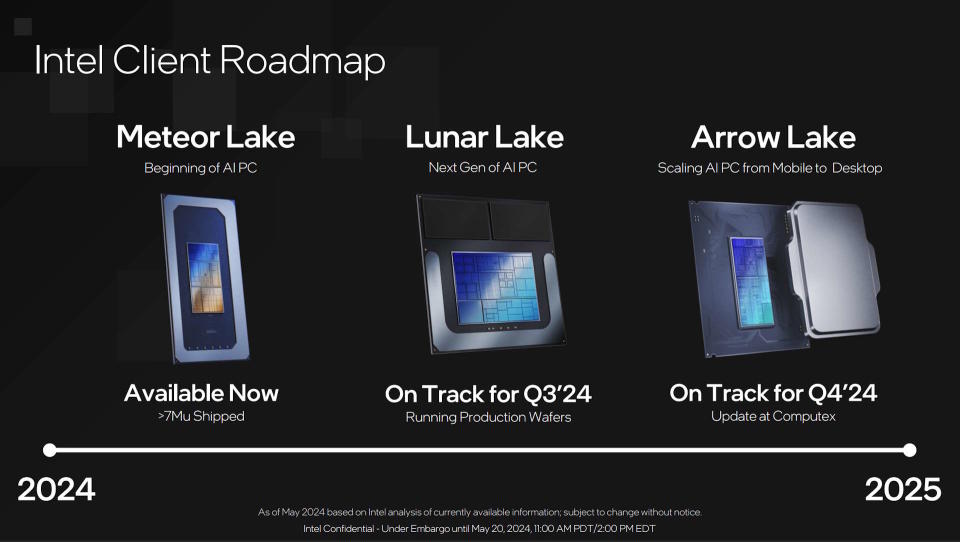
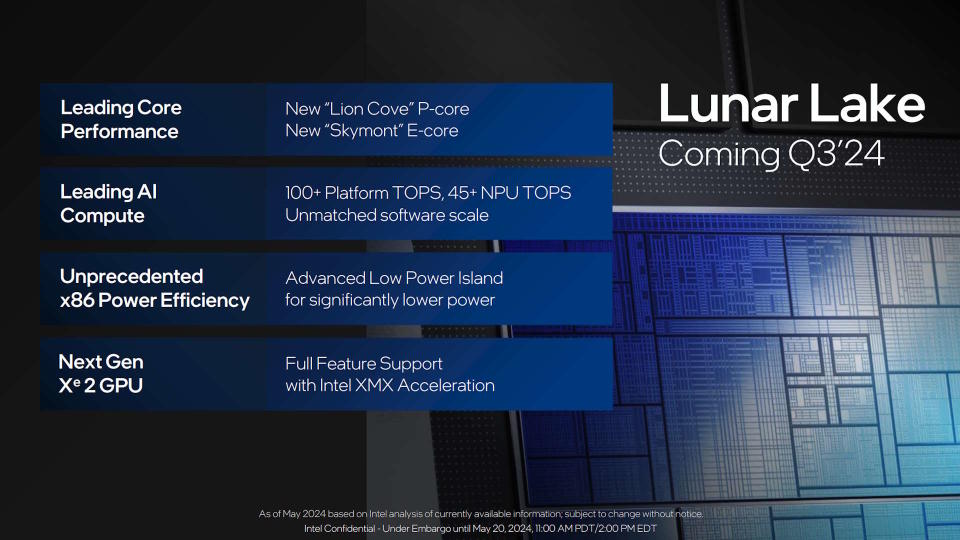
That does all bode pretty well for Lunar Lake when it arrives in laptops in the July - September time frame, so long as it can back up all these claims in real terms once the chips and laptops are out there.
But it also potentially suggests good things for Arrow Lake, too. That's the new CPU architecture for standard laptops and next-gen desktops coming towards the end of the year and is set to use the same Lion Cove and Skymont microarchitectures for its Performance and Efficient cores respectively as Lunar Lake will. Though they will be reportedly—partly at least—built using Intel's fancy new 20A production process.
It won't use the new Battlemage-based Xe2 cores for the relevant iGPUs, however, but you'd expect those chips to more regularly be paired with discrete graphics cards. And we can't all have nice things, either.
But in real terms, this latest info drop from Intel is rather light on the details and rather more reliant on promises against the claims of the competition. How any of the new chips—be they Intel Lunar Lake, AMD Strix Point, or Qualcomm's Snapdragon X Elite—actually stack up in the final reckoning is going to take time and independent testing to sort out.
Though we probably won't be using Microsoft Teams as part of our own benchmarking suite when it comes to it. Sorry, Nick.

 Yahoo News
Yahoo News 
